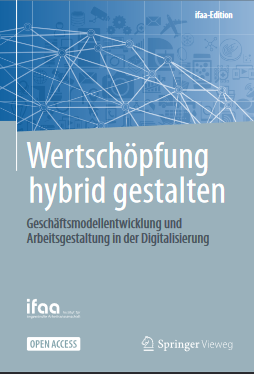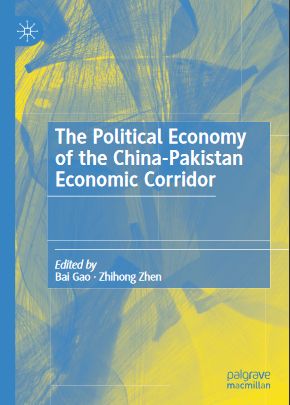موضوعات
آموزش و پرورش
ادبیات و زبان
پزشکی، دندانپزشکی و داروسازی
تاریخ و جغرافیا
داستان و رمان
دیگر
دین و فلسفه
روانشناسی
ریاضیات و آمار
سلامتی، تناسب اندام و رژیم غذایی
شیمی و پلیمر
علوم اجتماعی و حقوق
علوم زیستی و بیوتکنولوژی
فیزیک و نجوم
کامپیوتر و اینترنت
کتابهای کودکان و داستان
کسب و کار و اقتصاد
کشاورزی و دامپزشکی و غذا
معماری
مهندسی و فناوری
هنر و تئاتر
محصولات
International Summitry and Global Governance: The rise of the G7 and the European Council, 1974-1991 (Cold War History)[2014] - Original PDF
نویسندگان: خلاصه: International Summitry and Global Governance: The rise of the G7 and the European Council, 1974-1991 (Cold War History) 1st Edition by Emmanuel Mourlon-Druol (Editor), Federico Romero (Editor)The Endogenous Energy-Saving Technological Change in China’s Industrial Sector - Original PDF
نویسندگان: خلاصه: Preface Decarbonization of the Chinese economy largely depends on the degree of decar- bonization of industry. Since improving energy efficiency and increasing energy R&D investment are arguably the chief drivers of the sustainable growth of the Chinese industry, this book attempts to study energy efficiency and energy R&D investment under one normalized economic model. By distinguishing between energy R&D investment and non-energy R&D investment and drawing on the paradigm of neoclassical economics, I start by clarifying the basic concept of energy- saving technological change (hereinafter referred to as “ESTC”) and the related endogenous mechanism, proceed to integrate under the existing endogenous growth model two different mechanisms whereby R&D heterogeneity affects energy effi- ciency, namely the effect of factor substitution and the effect of increased effective energy input, and finally build a framework of analysis and a mathematical model of R&D heterogeneity-based endogenous ESTC in industry. I analyze the model with the tools of competitive equilibrium, centrally planned equilibrium, and numerical simulation and empirically test the major assumptions of the model with industrial statistics and econometric analytical tools, namely the mixed data regression model, the panel data regression model, and the dynamic panel data regression model. This book focuses on how R&D heterogeneity influences endogenous ESTC in China’s industrial sectors and endeavors to answer the following questions: How does R&D heterogeneity bring about endogenous ESTC? How are the rates of ESTC in the industrial sectors estimated? What is the impact of R&D heterogeneity on the rates of ESTC in the industrial sectors? This book sets itself apart from other existing research by the following work and potentially innovative pointsWertschöpfung hybrid gestalten Geschäftsmodellentwicklung und Arbeitsgestaltung in der Digitalisierung - Original PDF
نویسندگان: خلاصه: V Vorwort Die fortschreitende vernetzte und intelligente Digitalisierung verändert bestehende Möglichkeiten und eröffnet neue Chancen, um Daten in Unternehmen wertschöpfend zu nutzen. Die daraus entstehenden Informationen können dazu beitragen, Kundinnen und Kunden innovative, datenbasierte Dienstleistungen zu bieten. Diese sogenannten Smart Services sind eine zusätzliche, hybride Wertschöpfung und helfen bspw. bei der Prozess- optimierung, Ressourceneinsparung und Planungseffizienz. In dem vom Bundesministerium für Bildung und Forschung geförderten Projekt „AnGeWaNt – Arbeit an geeichten Waagen für hybride Wiegeleistungen an Nutz- fahrzeugen“ wurde die Entwicklung und Gestaltung hybrider Wertschöpfung durch ein breites Konsortium aus Wissenschaft und Wirtschaft erforscht. Von 2019 bis 2022 wurden drei Anwendungsbetriebe bei der Entwicklung und Pilotierung hybrider Geschäftsmodelle unterstützt. Hybridisierung erfordert Digitalisierung und geht einher mit Veränderungen in der Arbeitsgestaltung in den Betrieben. Insbesondere Prozesse und organisatorische Strukturen können sich durch die Hybridisierung verändern, sodass überprüft werden sollte, ob derzeitige Führungsleitlinien sowie Zusammenarbeit und Kompetenzen zukunftsfähig sind. Darauf aufbauend dient eine ganzheitliche, sozio- technische Gestaltung, bei der die Bedarfe von Führungskräften und Beschäftigten sowie die Rahmenbedingungen des Betriebs berücksichtigt werden, als Basis für die erfolg- reiche Implementierung hybrider Geschäftsmodelle. Diese Buchpublikation soll Unternehmen und weiteren Institutionen die Vorgehens- weise zur Entwicklung von hybriden Geschäftsmodellen sowie ihrer Umsetzung im Betrieb aufzeigen. Eine soziotechnische Gestaltung hybrider Wertschöpfung sowie ein geeigneter Umgang mit Veränderungen, welche durch Digitalisierung und Hybridisierung entstehen, werden aufgezeigt. Die in diesem Werk vorgestellten Inhalte und Ergebnisse basieren auf den im Projekt AnGeWaNt gesammelten Erfahrungen und liefern Ihnen Hinweise und Methoden, mit denen eine Entwicklung, Umsetzung und Gestaltung hybrider Geschäftsmodelle unterstützt wiThe Political Economy of the China-Pakistan Economic Corridor - Original PDF
نویسندگان: خلاصه: The China-Pakistan Economic Corridor (CPEC) is the pilot project of China’s Belt and Road Initiative (BRI). This is China’s first government- to-government project with an aim to comprehensively promote the eco- nomic development of another country along the Silk Road. As China’s first overseas project with large-scale investment, CPEC has presented both the Chinese government and Chinese companies two major chal- lenges: not only must they undertake an adjustment process to situate themselves within the foreign political, economic, cultural, and religious environments, but they must implement CPEC projects via Pakistani insti- tutions and mechanisms which function under operational logics quite different from those at home. Analyzing the Chinese and Pakistani experi- ences during the early stage of CPEC can provide valuable insights that help us understand the political economy of the BRIReimagining Prosperity Social and Economic Development in Post-COVID India - Original PDF
نویسندگان: خلاصه: The present volume is the outcome of a series of online seminars organ- ised by the Bahá’í Chair for Studies in Development at Devi Ahilya University, Indore, to explore the second-order effects of the COVID- 19 pandemic on India’s most vulnerable populations. The consequences of the pandemic in terms of the millions of deaths and the adverse impact on social and economic development around the world have been well- documented. India has been one among the worst-affected countries on account of the loss of both lives and livelihoodsآیا کتاب مورد نظر هنوز بر روی سایت قرار نگرفته است؟ جای نگرانی نیست! کافی است بر روی گزینه سفارش کتاب کلیک کرده و درخواست خود را ثبت کنید. در کمتر از چند ساعت کتاب شما را آماده خواهیم کرد.
![Rebellen - Partisanen - Guerilleros: Asymmetrische Kriege Von Der Antike Bis Heute (German Edition)[2013] - Original PDF](https://dl.libsan.ir/images/1/12/3_646a5020e284c.jpg)
![PreuBen: Eine Besondere Geschichte; Staat, Wirtschaft, Gesellschaft Und Kultur 1648-1947 (German Edition)[2019] - Original PDF](https://dl.libsan.ir/images/1/12/22_646931aea0099.jpg)
![Executive Function in Education, First Edition From Theory to Practice[2010] - Original PDF](https://dl.libsan.ir/images/1/12/9_6468ed7001c3d.jpg)
![International Summitry and Global Governance: The rise of the G7 and the European Council, 1974-1991 (Cold War History)[2014] - Original PDF](https://dl.libsan.ir/images/1/12/4_6468e7639516a.jpg)
![Iberische Diktaturen: Portugal unter Salazar, Spanien unter Franco[2012] - Original PDF](https://dl.libsan.ir/images/1/12/1_6468e474232f3.jpg)




